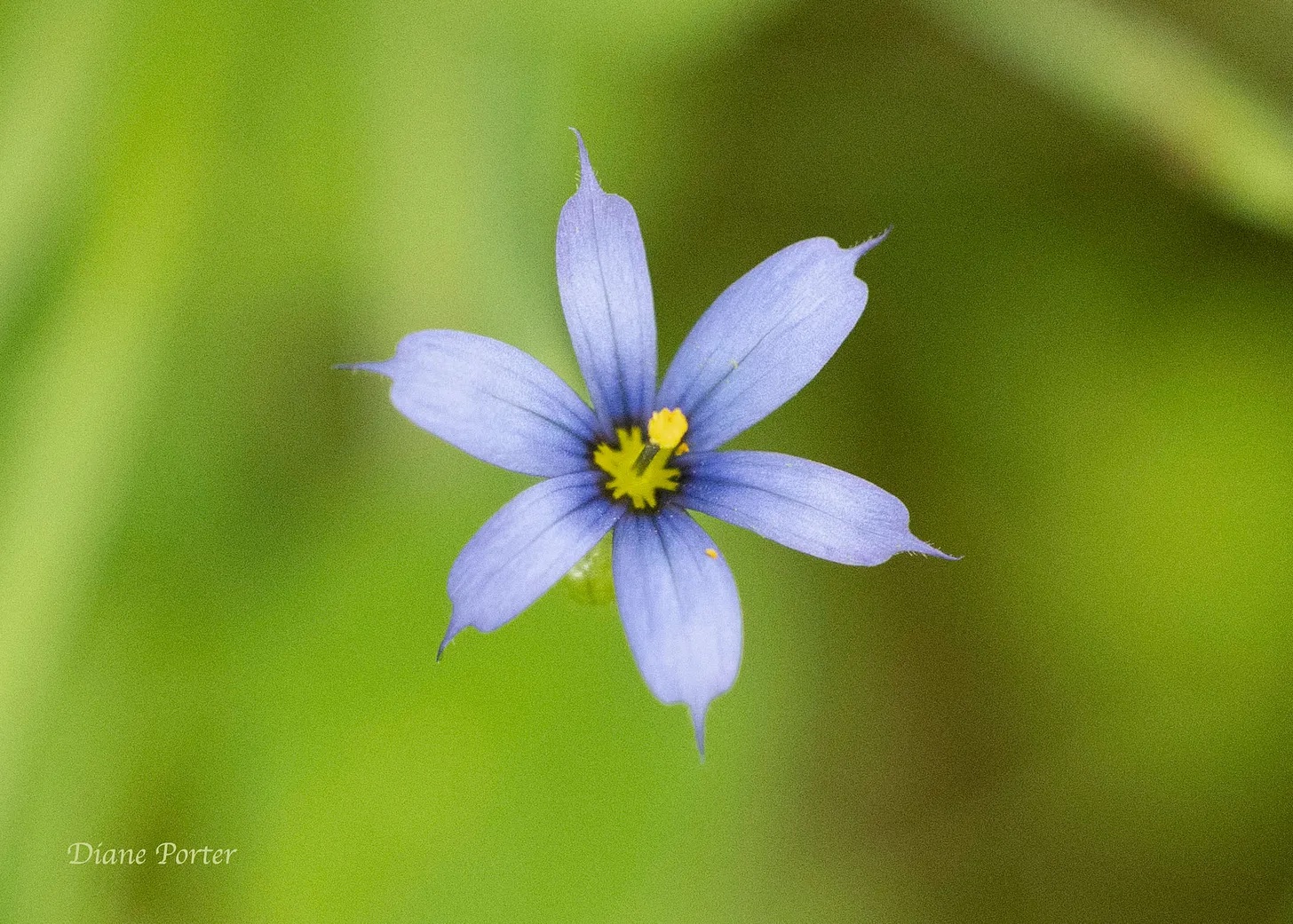Diane Porter of Fairfield first published this post on My Gaia, an email newsletter “about getting to know nature” and “giving her a helping hand in our own backyards.” Diane also maintains the Birdwatching Dot Com website and bird blog.
So small and hiding. You could walk right past them. But look down into the long grasses, and you’ll see their tiny blue faces looking up at you.
Each blossom is smaller than the tip of your little finger. Blue. It has six petals that end in a wispy point. In its bright yellow center, the pollen resides.
Its name is Blue-eyed Grass, named that way because of its long, thin leaves.
But it’s not actually a grass. The shape of the plant is like a miniature iris, with flattened stems and leaves. In fact, it belongs to the iris family.

When I first found a patch of Blue-eyed Grass growing wild on my land, I marked the spot. After the flowers were finished, I dug up a small clump. It separated easily into several tiny plants.
I planted them by the path to my front door, where I could keep them weeded and watered. They grew slowly, and of course died back when winter came. However, they’re a perennial, and so they came up again the next spring.
Soon each plant looked like a tuft of grass. I kept a little space clear around them, because Blue-eyed Grass does not do well in the shade of big, leafy plants.

Stout Blue-eyed Grass, Sisyrinchium angustifolium
They bloomed generously. For a couple of weeks in late spring, every time I went out my door I had to stop and admire them.
Where to get Blue-eyed Grass
It would not be ethical (or legal) to dig up plants in parks or other public lands, nor on others’ private property without permission.
Fortunately, some nurseries specialize in native wildflowers. They can tell you which species of Blue-eyed Grass are native to your area. For example, in the Midwest, I often buy seeds and native plants from Prairie Moon Nursery.
Miniature beauty
Tiny flower. Great happiness.
Editor’s note from Laura Belin: Diane explained to Bleeding Heartland, “Throughout most of Iowa, the expected species is Sisyrinchium campestre, Prairie Blue-eyed Grass. On my land, in the southeast corner, I find only S. angustifolium, Stout Blue-eyed Grass.”


1 Comment
Thanks, Diane! This beautiful little flower is a good example...
…of why every acre with perennial vegetation should be evaluated before it is tilled up to become a prairie planting. I’ve seen more than one very-beat-up pasture that didn’t look like a prairie remnant, but the presence of this flower was a clue that more natives were probably still present. And sure enough, it turned out they were, and only needed time and selective fire to show themselves.
I also know of sites that were destroyed before the owners learned what beat-up remnants can look like and what they probably had. When we learn better, we can do better.
PrairieFan Thu 13 Jun 4:28 PM